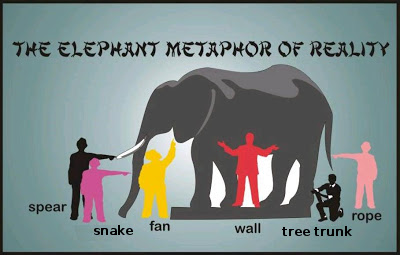
(Click to see their view of reality)
by John P. Pratt
18 Oct 2019, 1 Reed (SR), End Tabernacles (TV)
©2019 by John P. Pratt. All rights Reserved.
|
1. Duality of Spirit/Soul 1.1 Hebrew 1.2 Christian 1.3 Egyptian 1.4 Tibetan 1.5 Persian 1.6 Greek 1.7 Chinese 1.8 Hindu 1.9 Native Tribes 2. Modern Science 2.1 Regression of Soul 2.2 NDEs of Spirit 3. Two Become One 3.1 Unity is Life 3.2 Rebirth of Spirit 3.3 Second Death 4. English Definitions 4.1 Soul 4.2 Spirit 4.3 Psyche 4.4 Intelligence 5. Conclusion Notes |
Eastern and Western religions both have fervent adherents who all agree on most points of how to act, such as the importance of treating everyone as you would like to be treated.[1] There is, however, at least one huge difference between them concerning the nature of the human experience. The West (Christianity) has viewed life as a single mortal probation from birth to death, after which one is judged and either goes to heaven or hell. On the other hand, the East has looked at life as just one of a series of multiple mortal probations, in which one has many lives to return to "choose again" to try to improve. "Reincarnation" as understood in my work means that humans can only be reborn again as humans, not other life forms. The Eastern equivalent of a "judgment" of a life is represented by the "law of karma" in which one's next life includes scenarios to learn from and/or be punished for acts in previous lives.
 |
A recent article summarized the witness of an eminent Tibetan clairvoyant man named Lobsang Rampa.[2] He wrote 19 volumes in English for the Western mind to learn about the spirit world and what is really going on in that invisible realm. He brought forth enough evidence to support reincarnation as to merit this article, which considers what is probably the biggest difference between the two perspectives: after death, is the spirit reincarnated or does the soul go to heaven or hell?
This article explores the possibility that these two opposite views are literally looking at two sides of the same coin. It suggests that the spiritual part of man is composed of at least two main parts and most ancient cultures recognized that and had different names for each. They also described those two parts splitting apart at death and going different places. It also notes that those descriptions agree well with modern scientific research into the mind and psyche. Let us now look at how many of these views and beliefs may heal this huge rift between Western and Eastern religions.
 |
Quoting from Novak's book:
"Although the two terms tend to be equated today, "soul" is not properly the same as "spirit". The blurring of distinctions of these two is, historically speaking, something of a recent development; it used to be understood that they referred to two completely separate substances. In the ancient Hebrew of the Old Testament, just as in modern English, there was one term for "soul" and a different one for "spirit". The Old Testament consistently distinguished the two, they were referred to as having completely different attributes. Souls were referred to regularly as 'feeling' this or that; a spirit, however, was always 'doing' or 'thinking', but never 'feeling' anything. The soul was thought to be capable of dying or experiencing death, but the spirit was never referred to as having died. After death the spirit was said to 'return to God', while the soul generally wound up in Sheol, the Jewish version of hell....
"The Hebrew prophets consistently used terminology appropriate to right-brain unconscious when referring to the soul. More than 110 times in the Old Testament the soul is reported as possessing attributes which today we know belong exclusively to the subjectively-oriented, emotionally-based unconscious, such as loving, abhorring, loathing, lusting, grieving, longing, and mourning, and as feeling bitterness, joy, humility, thirst, desire, anguish, weariness, enjoyment, satisfaction, comfort, contempt, and delight.
"The distinction is both clear and striking--nowhere in the Old or New Testament is it stated that the spirit experiences such feelings.
"Thirty-two times in the Old Testament, the soul is referred to as being able to die, twenty times as being in danger of being 'cut off', seven times as being in 'the pit', three times as being in 'hell', three times as being rent 'in pieces', four times as being 'destroyed', twice as being 'taken away', and once as being thrust into 'total darkness' and 'total silence', being 'dried up', being 'in prison', and being 'gathered with sinners.'
"Not even once is the spirit referred to in any of these contexts.... the spirit is spoken of in only one way in reference to death: The spirit returns to God who gave it (Ecclesiastes 12:7).
"Just as Israel's prophets spoke of the soul using terminology modern science reserves exclusively for the unconscious, so too they credited the spirit with the very traits science recognizes as belonging to the conscious, such as intelligence and comprehension: 'There is a spirit in man, and the inspiration of the almighty giveth them understanding' (Job 32:8)
"Over and over again in both the Old and New Testaments, the spirit is held up as the exclusive source and repository of knowledge, understanding, wisdom, and logic, the same characteristics modern science to the conscious half of the human psyche....
"And, further mirroring the human conscious, the spirit was also thought to possess of free will and conscious intent." -- pp. 36-38.
The Hebrew Old Testament is very consistent in its use of their word translated "soul" as having certain attributes. It speaks of the sinful soul suffering after death in a manner compared to being tormented in flames. The books of the Old Testament speak much about the soul after death, but almost nothing about the spirit after death, other than it returns to God. It does not teach reincarnation, although that doctrine was taught in some of the secret teachings, such as the Kabbalah. If reincarnation is indeed a true doctrine, it appears that the Lord did not want the general populace to know about it, perhaps because they might procrastinate the day of their repentance.[4] It was important to regard every life as the time to keep the commandments and prepare to meet God (Alma 12:24, 34:32).
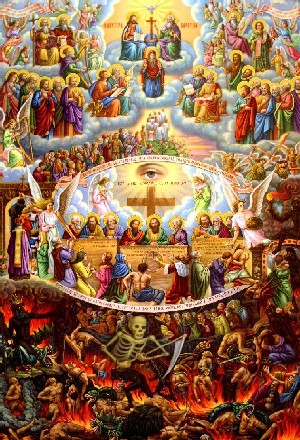 |
Moreover, it is clear that the disciples of Jesus, and Jews in general at that time, believed in reincarnation. For example, they asked was the man born blind due to his own sins or his parents (John 9:2). Moreover, the Judeans asked John the Baptist if he was (the reincarnated) Elijah (John 1:21), showing that they believed that possible. And when Jesus asked whom men said that he was, he was told Elijah or John the Baptist (Matt. 16:13-14). These examples clearly show that the Judeans at that time clearly believed in reincarnation.
But what about the teachings of Jesus himself? Perhaps He was just being kind in not correcting his disciples about their belief in reincarnation. One of the most quoted scriptures to support the assertion that Jesus believed in reincarnation refers to when Moses and Elijah appeared on the Mount of Transfiguration. After that event, the apostles asked why Malachi had prophesied that Elijah would be a forerunner to the Lord's coming. Jesus replied that Elijah would indeed come (before the Second Coming), but added that he also had already come, and had been killed, and then the apostles understood that He referred to John the Baptist (Mat. 17:1-3,9-13). To me it is not at all clear that Jesus was teaching about reincarnation, but more likely the concept that "Elijah" ("Elias" in Greek) can be used as a title to refer to a forerunner. That is, John the Baptist was the forerunner of the First Coming of Christ and either the Prophet Elijah or "an Elijah" (like John the Baptist) will be a forerunner of the Second Coming. What would be the point of Malachi's prophecy that the Prophet Elijah would return before the Second Coming (Mal. 4:5) if he were disguised by being reincarnated as an apparently different person (D&C 110:13-15)?
Did Jesus teach reincarnation explicitly? The answer appears to be that He did not teach it openly. The main hint that He believed it was that He did not correct His disciples who did accept it. There is evidence that He taught it secretly to his apostles, as in the Gospel of Thomas. Centuries later, when the canon of scripture was being compiled, although there were books advocating reincarnation, they were considered heresy and not included in the definition of orthodox Christianity.
There is one scripture in the New Testament which clearly indicates a distinction between the spirit and the soul, and indicates that the spirit and the soul can be divided into two:
For the word of God is quick, and powerful, and sharper than any twoedged sword, piercing even to the dividing asunder of soul and spirit, -- Heb. 4:12
Moreover, Jesus taught that it was indeed possible to lose one's soul:
For what is a man profited, if he shall gain the whole world, and lose his own soul? or what shall a man give in exchange for his soul? --Matt. 16:26
Let us now consider Egyptian beliefs, which might have come in part from Abraham. They also feared losing their soul, much as Jesus warned, and the quotation from Hebrews suggests the losing of the soul could occur when it is "cut off" by the sword of the word of God. The Egyptians feared the "second death", which meant that their soul would be lost by exposure to the truth at their life review at their judgment after death.
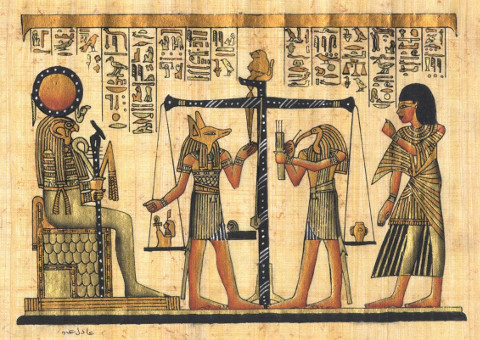 |
"The Egyptians believed that ... everyone also possessed ... a ka and a ba.
"The ka ... was the part of a person which possessed all of his desires, expectations, and needs,... the person's abstract individuality and personality. Thought to be born along with a person, the ka dwelt within one's heart ... After death, the ka's behavior took on an instinctive, dimwitted character, it was thought to stay in or near the person's tomb ...
"the ba dwelt within the ka during life. Thought of as the life principle itself ... the ba had immortal godlike characteristics. The ba was believed to pre-exist the physical birth of the individual, entering the body at birth and exiting it again at death.... the Egyptians credited the ba with both intelligence and the power of communication, as well as the spark of life and the power of animation.
"After death ... take a harrowing trip to place of judgment, where one's heart was weighed ... testifying against them during this judgment to reveal their sins.... The deceased was apparently directly involved in this judgment process... the Egyptian seems to have expected the judgment experience to force him to recognize his sins and shortcomings by directly confronting him with his past memories." -- pp. 110-112.
Here we see a very close match, with the "ka" being the Hebrew "soul" and the "ba" being the "spirit".
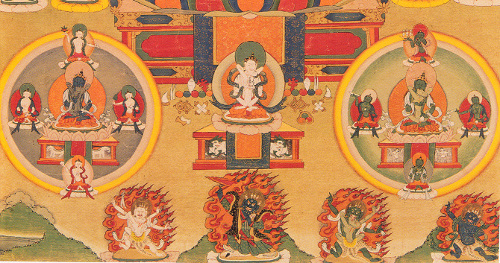 |
He could observe the astral body as connected to the physical body by a silver cord and he associated natural occurring death as the severing of that cord, which he knew was mentioned in the Bible (Eccl. 12:6-7).
He felt that both the physical body and the etheric body disintegrated back into native elements. His whole view of the afterlife was following the spirit and watching it visit the Hall of Records to review its life and then later go on to be reincarnated into a new mortal life.
His beliefs were largely founded on what he could actually see as a clairvoyant. He did not see a hell where people were being tortured, nor did he believe in the continued existence of the etheric body after death because he did not see it much longer after the body was disposed of.
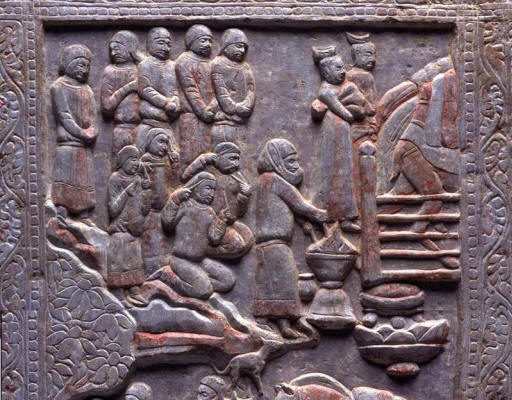 |
"The ancient Zoroastrians of Persia ... also embraced a doctrine about a binary human soul. These ancient people, precursors of much of Western thought, credited people with two sides to their spiritual selves, the urvan and the daena. They believed that the complete unification and reconciliation of these two halves, if achieved prior to physical death, would result in personal immortality. In fact, however, the belief in this two-part soul in Persia is even more ancient than Zoroastrianism itself. Indo-Iranians already believed, prior to Zoroaster's birth, that people possessed two souls, the urvan, following death, became imprisoned in the land of the dead, and the fravashi was to be immortal and unharmed at death.
"Zoroaster taught that, after death, all people had to cross the Bridge of the Separator, where 'their own soul and their own self shall torment them.' Such torment, he taught, would come to all who had been 'dwellers in the House of the Lie' during their lives. At this bridge, all souls were to be stripped naked; 'this ordeal had the effect of separating the dead in some unspecified way." -- p. 113.
It is interesting that in addition to the belief in the duality of the spirit and soul, this religion also stipulates that if the two can be unified during mortality, that the person becomes immortal. This concept is similar to the Christian requirement that one must be born again of the spirit to enter the Kingdom of the Father and the Tibetan belief that one requirement to graduate from the cycle of reincarnation is the raise the kundalini, uniting the lower chakras to the upper chakras. This suggests that this unification may also include unifying the conscious with the unconscious, these two spiritual parts of man. The Tibetan source stated that after the kundalini has been raised that one can have access to his life plan which is stored in the unconscious mind. This would also explain why those in paradise appear to have both parts of their spirit united because they have their memories and personal identities. In other words, it would mean that those in hell are souls only, but those in paradise have their spiritual halves united.
It should also be noted that there are traditions that Zoroaster was a student of Daniel's, hence their beliefs are much like the Hebrew, but may have some added depth in the mysteries that were understood.
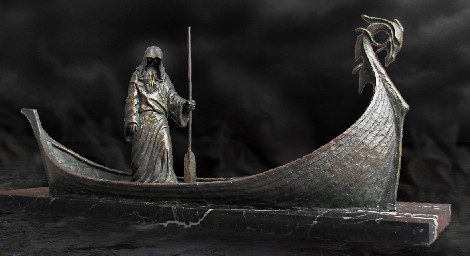 |
"The Greeks credited human beings with three parts to their makeup: a body, a thymos, and a psyche.
"The thymos was the conscious self, and the psyche something akin to the life principle. To the Homeric Greeks, a human being was only truly a human being when body, thymos and psyche were all functioning as an inter-related whole. Death shattered this living whole with the dissolution of the body, the thymos was merged with the air, and the psyche transformed into a shadowy replica of the living person ... descended into Hades ... There with the wraiths of all the other dead, bereft of self-consciousness ... lived on in dismal gloom.
Later, as Pythagorean thought entered theology, the doctrine of reincarnation was grafted into this scenario" -- pp. 114.
Here we see a very close match, with the psyche being the ka/soul and the thymos being the ba/astral body (mind).
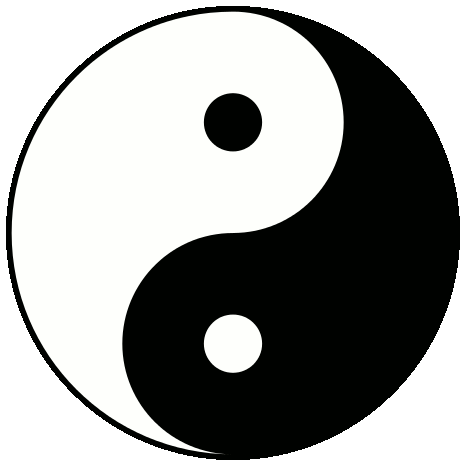 |
"During the Chou dynasty of China (1025-256 BC), the nobility ... believed themselves to be composed of two spiritual halves which parted company at death. One of these, the hun, was intelligent, spiritual, masculine, active, and 'yang-like' and always return to enter the presence of God after death. The other half of the self, the 'po' was considered only semi-conscious, more earthy, feminine, emotional, passive, and more 'yin-like'; after death it was always inescapably doomed to an eternal imprisonment in a murky, underground land of the dead." -- pp. 114-115.
Notice how similar this is to the Judeo-Christian belief that after death the hun/spirit returns to God but the po/soul goes to hell or paradise.
 |
"Like two birds of golden plumage, inseparable companions, the individual self [the subjective, feeling soul] and the immortal self [the objective, impersonal spirit] are perched on the branches of the selfsame tree. The former tastes of the sweet and the bitter fruits of the tree; the latter, tasting neither, calmly observes.
"The first aspect of the Self [the conscious, objective spirit] is awake ... conscious only of external objects.... He is the enjoyer of the pleasures of the senses. The second aspects of the Self [the unconscious, memory-laden soul] is ... dreaming, and conscious only of his dreams. In this state he is the enjoyer of the subtle impressions on his mind of the deeds he has done in the past." -- The Mandukya Upanishad, pp. 118-195.
After quoting these verses from the Upanishads, Kovak goes on to explain that it is only the immortal self (spirit) which goes on to reincarnate, not the individual self (soul). He notes that the Upanishad text never describes what happens to the soul after death.
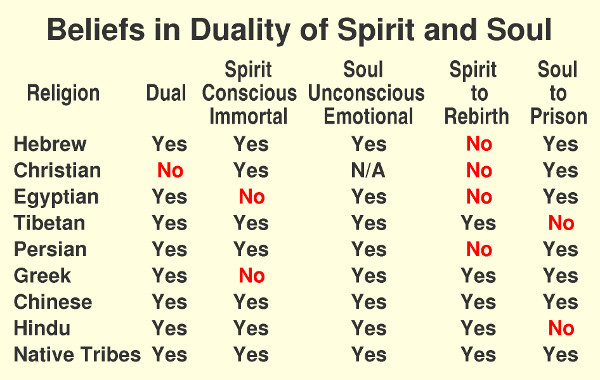 |
"The binary-soul doctrine is widespread throughout North Amercan Indian tradition, found in over a dozen different tribal cultures in the U.S. and Canada. In South America, the Mbua of Brazil and the Waica of the Amazon basin profess it as well. In Africa, this belief is shared by Ewe of Togo and the Bambara of Mali. In Eurasia it's found in the religions of the Khanty and the Mansi of the Ob River region, the Samoyed of Europe and Siberia, the Tunguz of the Yenisei River and the Yukagir of Siberia.
"Identical beliefs area also shared by the Mossi of Burkina Faso in West Africa, the Melanesians of the Solomon Islands, the Eskimos of the Arctic, and the Guarani-Apapocuva of South America. However, all these peoples' religions parallel Division Theory even more closely; they believe not only in binary souls, but also that those souls divide at death, with each separate soul-unit then experiencing a different sort of afterlife.
"And, of all the traditional beliefs of all the peoples on earth today, those of the Australian Aborigines and the Luba of Zaire most closely mirror Division Theory: the people of both cultures believe the one of the their two soul units goes on to reincarnate after death, while the other becomes trapped in a fixed unconscious realm.
"In many of the cultures among North American Indians, Australian Aborigines, and African tribesmen, one of the two spiritual units is identified as the source of life and consciousness, while the other is associated with the unconscious and the feelings. In such cases the 'feelings' unit is always the one believed to experience afterlife as a prisoner in a 'world of the dead'. Many of these cultures also believe in reincarnation" -- pp. 117-118.
It is amazing how many diverse cultures who live close to the earth have such similar understandings of things which those who are insulated from the earth with concrete and asphalt, living in buildings designed to keep nature (God) out as much as possible, don't even believe in a spiritual world at all.
Modern science is finally starting to allow the spiritual back into the laboratory for investigation. All such thought had been driven out by atheists who hijacked science with their materialistic "if-it-cannot-be-observed-it-does-not-exist" assumption.[5] Let us consider what science has to say about the possibility of a duality of spirit.2. Modern Science
Modern researchers have done much work with hypnosis to regress a patient back to remember past events. Hypnosis is basically a procedure to bypass the keeper-of-the-gate of the conscious mind in order to directly access the subconscious. The subconscious does not reason. It is totally receptive and is the place where all long-term memory is stored. It is also receptive to suggestions and commands, which usually come from the conscious mind. When a hypnotist is allowed access to the subconscious, it can be very dangerous because the subject will believe anything it is told and with the amazing power of believing, the suggestion will be realized. Be very careful before allowing anyone to hypnotize you just to amuse an audience watching you press a burning cigarette into your arm without having it cause a burn.
 |
In case one thinks this is all accomplished by mischievous evil spirits which plant these memories in the subconscious, there are many cases of very young children who can remember events of past lives. Often people in the same families reincarnate together but with parent and child reversed or other new relationship. Satan is not allowed to tempt or damage little children before the age of accountability, so this research is strong scientific evidence in favor of reincarnation.
In view of the hypothesis of this article, it becomes strong evidence that memory is stored in, or accessed by, the unconscious, unreasoning, and receptive part of a person. Moreover, we all have noticed that memory is best of past events where strong emotions were experienced, or other senses, such as the fragrances of Christmas or home cooked pies. This is also evidence that the senses and emotions are stored in this area, which has been identified as the "soul" in religious jargon.
There is also scientific evidence of exactly the opposite of reincarnation. Many people now report Near Death Experiences (NDE) which do not speak of reincarnation. The typical experience is that a patient is lying on an operating table in a hospital and suddenly they find themselves looking down on doctors giving electric shocks to the heart of a corpse that they hardly recognize as themselves. They then report going through a tunnel of light to a place of great peace and beauty or else to a dark place of distress and even torture. They have a life review, usually by a being of light, and they are dismayed to see that they missed the whole point of life, which was typically to learn to love one another. The examples we learn about are those who are given a chance to return to mortality to complete some unfinished work, such as raising their children. Years ago these were kept secret but now they are so common that they are reported by many people.
 |
There are also modern NDEs or outright extended visions extending over a month or more of both heaven[7] and hell[8] which need to be either taken seriously or otherwise explained.
There is also an entire field now researching the stories of the existence of spirit children who have not yet been born into a family.[9] There is much evidence that their spirits existed before birth and that they were eager to join a family. Usually these experiences are in families where the parents had decided they already had enough children, but changed their minds when they learned of, and even sometimes saw or met, the spirits who were to come to their family.
That is research with very different results from life regression research. The spirit which rises from the body and can swiftly leave the room to go where desired matches the Tibetan description of the spirit, which contains the mind, intelligence and reasoning power. It does not have a long-term memory and barely recognizes its own body. The vision its sees of its life replayed is watched rather than remembered. This is a match for the spirit, not the soul. There are cases where it is allowed to visit heaven or hell, but it is only a visit, as a wake-up call, rather than an assignment to a new residence.
Thus, there is now scientific evidence for a duality of some invisible part of mankind. The one part has perfect memory and emotions, but no reasoning power (the soul). The other is intelligent, capable of making choices, and gives life to the physical body (the spirit). When it is out of the body, the consciousness has left and the body is either asleep, in a coma, or dead.[10] This research becomes a second witness to many of the religious beliefs of so many nations.
This section is my attempt to merge and understand the first two sections, along with some secret or hidden teachings of Jesus. It tries to describe the elephant in the first illustration by assembling many perspectives! In particular it attempts to merge the teachings of Jesus Christ with those of the Egyptians, Tibetans, Persians, and the Chinese. There is a common theme among them worthy of exploration.
The spark which triggered the thoughts in this section came from the Persian belief that it is so important to connect the two halves of one's spiritual aspect that doing so leads to immortality. What does that mean? That sparks many mental connections to other teachings such as Jesus teaching that those who believe in him shall never die (John 11:26), His teaching of the requirement to be born again, and the Tibetan idea that raising the kundalini leads to graduating from the cycle of reincarnation.
The Persians seem to be clearly stating that it is possible to forge a permanent bond between the two spiritual halves of the conscious and the unconscious, the mind and the emotions. That sounds true and very important to understand. They said it leads to immortality. Immortality of what? It would at least include immortality of the unified spirit because the mind is the immortal part and the other half contains the identity (memories and personality) of that individual. In other words even though the immortal mind part may have lived in several bodies through mortal probations, it was apparently not permanently connected to either the soul or the body if the three were all separated at death. This possible welding of the two halves apparently can lead to the immortality of the individual, usually called the "soul" in the scriptures. Otherwise that soul separates at death from the spirit mind which goes on to reincarnate and be born with a new soul to attempt again to live well enough not to lose his soul.
This coupling and changing duality into unity is very reminiscent of the Tibetan teaching that raising the Kundalini is required to graduate from being continually reborn into reincarnation. That refers to another form of unification process, where a surge of electricity up the spinal cord unites the chakras and makes the person "whole". It specifically mentioned that after this event one is more in touch with the subconscious self. That is, it includes the unification of mind (the top half of the body) to the emotions (the lower part of the torso). The heart is both part of the upper mind part ("What a man thinketh in his heart, so is he")[11] and also part of the lower as in "gut feeling" (emotions are also associated with the heart). This understanding gives new meaning to being of "one heart and one mind": it can refer to personal unification, as well as choosing not to dispute with others.
These concepts also bring to mind the secret teaching of Jesus to his apostles in the Gospel of Thomas, which speak of the importance of making the "two" become "one":
Jesus said to them, "When you make the two one, and when you make the inside like the outside and the outside like the inside, and the above like the below, and when you make the male and the female one and the same, so that the male not be male nor the female female ... then will you enter the Kingdom." -- Gospel of Thomas 22
 |
The power of that unification is explained in that same Gospel of Thomas:
Jesus said, "If two make peace with each other in this one house, they will say to the mountain, 'Move away,' and it will move away." -- Gospel of Thomas 48[12]
The is not only amazing, but it brings to mind where the Tibetan said a very similar thing:
With complete control of the serpent force [Kundalini] one can achieve almost anything. One can move mountains, or walk on water -- Rampa 3:93a[13]
In the article about the Tibetan, it was noted that he claimed that in order to graduate from reincarnating on the Wheel of Life, that he taught that one must awaken this serpent force. He explained that it connected the lower chakras (female, emotional) to the upper chakras (male, logical). This definitely sounds like a match. That is, it is equivalent to "making the two one", required for spiritual advancement.
In that same last article, it was proposed that the awakening of the serpent fire is the same as what Jesus called being "born again of fire and of the Holy Ghost".[14] Now let us see how those two concepts, which are now one, can be seen in light of the Persian view of connecting the two halves of the spirit.
 |
With that understanding of birth occurring when a cord connects two halves, now we can see why Jesus might refer to the raising of the Kundalini as a spiritual rebirth. The serpent fire is actually a tube which connects the two halves of the spirit. All of these diverse symbolisms are now starting to converge into a single understanding.
Consider also the mysterious saying of Jesus that "whosoever liveth and believeth in me shall never die" (John 11:26). What does that mean, considering that most of his disciples who believed in him all died a physical death? In light of these teachings, it most likely means that at the physical death, the soul (the individual) will not be separated from his eternal spirit which gives him life. Thus, the soul will not die by being cut off, but instead both will continue on together as the glorious being the Egyptians called an aakhu, as is discussed next.
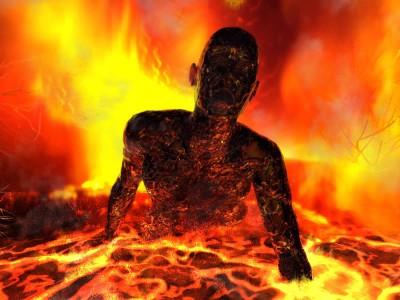 |
"Sacred prayers at one's funeral were supposed to reunite the ba with its ka in the next world. The deceased was then transformed into an aakhu, ensuring the person's continued existence in the after-world. All of the prayers in the Egyptian Book of the Dead had but one aim, to ensure life after death by assisting the departed one to become an aakhu, thus avoiding the ultimate horror, dreaded by every Egyptian--dying a second, final, spiritual death.
"Transfigured spirits likened to the gods themselves, perfected aakhus were imagined to be radiant, glorious, intelligent, immortal beings shining like the very stars in heaven. But ... one also had to successfully pass the great judgment.
"if their heart revealed shame and guilt, then their ka would be removed from them forever. This, then, was the ultimate disaster, that 'second death' considered far more threatening than the first ...
"Those who did not successfully pass this divine judgment had their ka, or heart, prompty eaten by Am-mit, a goddess of the underworld, 'She Who Devours'." -- pp. 111-112.
This description is very reminiscent of what is also called in Christianity the "second death" which is compared to being utterly destroyed after the Final Judgment in a lake of fire (Rev. 2:10-11, Rev. 20:6-7,14, Jacob 3:11, Alma 13:30).
So far, this article has used the traditional English words "spirit" and "soul" for the two parts of the human entity discussed herein, in order to introduce the subject in familiar terms. This whole field is fraught with either a lack of words or very "overloaded" words, meaning words having multiple meanings which lead to much confusion. Thus, in order to compare the ancient and modern beliefs, we need to define a working vocabulary. To do this, this article relies on modern revelation through the Prophet Joseph Smith to be a guide because it actually was given in English from Someone who knows exactly what is going on!
As an example of a much overloaded word is the word translated "soul" in the King James Version from the Hebrew word in the Old Testament. The overloading is in the Hebrew itself. Consider when David learned that the Lord would not leave his "soul" in hell (Psa. 16:10). That is the Hebrew word Nephesh (Strong's word 5315) which can mean "creation, body, or being". Most often that Hebrew word is used to represent an entire person, such as in "all the souls of the house of Jacob, which came into Egypt, were threescore and ten" (Gen. 46:27) and as in "And the Lord God formed man of the dust of the ground, and breathed into his nostrils the breath of life; and man became a living soul." (Gen. 2:7).
It is the latter definition which the Lord appears to use in modern English to the word "soul" to be the entire being: "And the spirit and the body are the soul of man" (D&C 88:15). In other words, the soul is the entire being. That definition allows for the simple definition that resurrection is the redemption of the soul (D&C 88:16), but that is beyond the scope of this article.
The Lord has apparently used the word "spirit" in modern English to refer to the invisible part of man, the part that is not the physical body: "And the spirit and the body are the soul of man" (D&C 88:15). Thus, that definition is adopted here. Thus, this article is about the spirit having two parts.
What should the feeling half of the spirit be called? It has been called "soul" in this article to match the KJV Bible translation, but now that word cannot be used because the Lord does not use it that way in English, but instead uses it to include the body. If we look at the above quotation about David when written in Greek, we find a much more precise Greek word which was translated "soul". That verse from Psalms is quoted in the New Testament as "Because thou wilt not leave my soul in hell" (Acts 2:27). The Greek word translated as "soul" is psyche. That is also a word in English which has multiple (confused) meanings, such as "the human soul, mind, or spirit". It is here proposed that the word "psyche" be used to refer to the part of David which is still in hell. That part of David contains all of his feelings and remorse for his sins during that lifetime. It might sound strange to us to say that David's psyche was left in hell, but at least it is precise and no new word had to be coined. The psyche is thus defined to be what was called the "soul" earlier in this article.
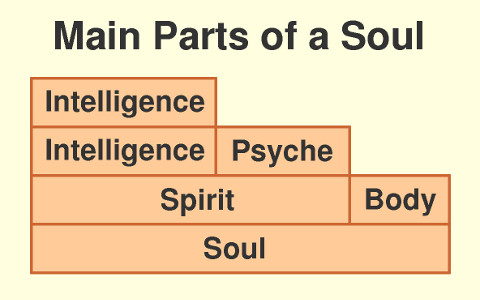 |
That Book of Abraham also provides the insight that these immortal intelligences were given an opportunity to be "added upon", that is, to have new layers of progression added to them (Abr. 3:26). That concept is illustrated in the chart, where the psyche is added to the intelligence to make a spirit, and the body is added to the spirit to create a soul. That chart, however, is mostly to understand the meanings the words. The actual order of being "added upon" appears to be that the psyche is connected to the body at quickening and the intelligence to the body at birth, but the psyche is not then connected to the intelligence to make a spirit. That happens when one is born again of the spirit, which is one of the requirements to progress. The intelligence alone can think but it has no feelings. During mortality a psyche was added to give it emotional feeling, and a body for physical sensations and experiences.[18]
Thus we see the richness of the depth of the Plan of Salvation, where we have been given a wonderful chance to progress and become more god-like if we follow the teachings and commandments of Jesus Christ.
There has been a huge gulf between the Eastern religions which espouse reincarnation and Christianity which rejects that notion, instead believing that after death the souls of men remain either in paradise or hell awaiting the Resurrection. This article attempts to reconcile those apparently opposing views by introducing the notion of the spirit having two distinct halves. It proposes that the two words "spirit" and "soul" as used in this context in the Bible refer to two different entities. The spirit contains the conscious, intelligent part of man and the soul is the unconscious, feeling entity. At death, both of these spiritual parts are usually separated as they leave the body and go to different places. The Old Testament states that the spirit returns to God and the soul goes to Sheol, the world of the dead.
It is also noted that most other religions world-wide believe in this duality of spirit and soul and also have different names for these distinct parts. Many have no trouble believing in both of the contested ideas. That is, they believe that the spirit, after having a life review, usually reincarnates into another mortal existence with a new soul and new body, becoming a new person, whereas the former soul is sent to a prison of torture or correction in the underworld for having sinned.
The Lord has provided a vocabulary in English to discuss this topic. This article also explains that the English word "soul" actually refers to the spirit and body united. Hence, the word "psyche" was introduced to refer to the the feeling half of the spirit which was translated "soul" in the KJV New Testament from the Greek word "psyche".
This proposed solution to the question of the destiny of an individual after death seems to have passed the test of time in many cultures. The problem has been due to different religions only knowing part of the story. Nevertheless, this article has only addressed this one single question of what happens after death, leaving many others for future research before reincarnation can be fully reconciled to Christianity. This first step, however, seems to be definitely in the right direction and to have overcome the first big hurdle. Time will tell if other apparent conflicts can also be resolved in order to more fully understand the Plan of Salvation provided for His children by our Heavenly Father.